Ponte Vecchio: The Famous Bridge In Florence
Florence’s iconic Ponte Vecchio, with its unique blend of history and commerce, invites visitors to explore its vibrant past and present. Unveil the history of this famous bridge spanning the River Arno and discover how it is symbolic of the undying spirit of Florence.
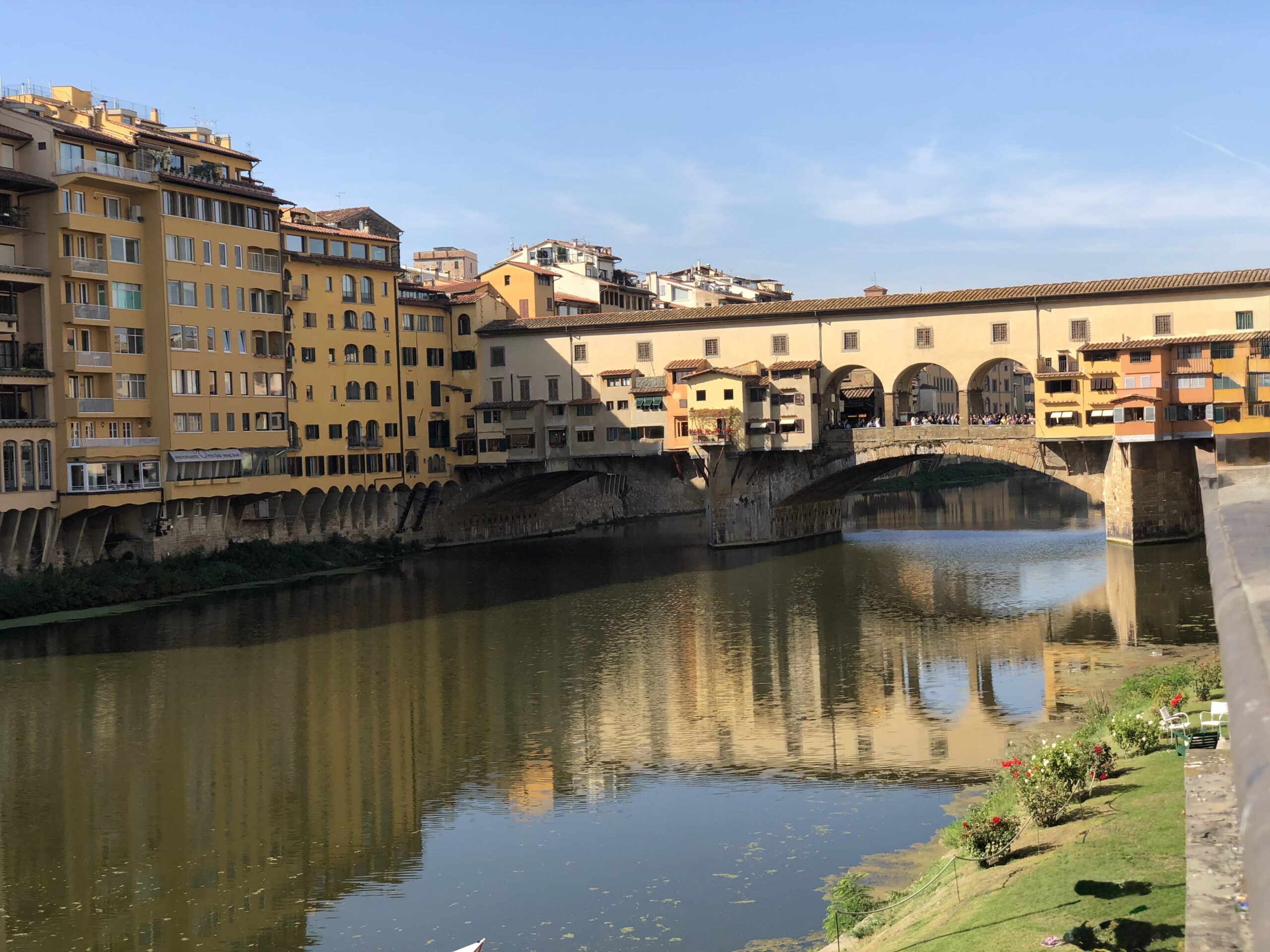
The Ponte Vecchio in Florence, Italy is one of the oldest bridges in Italy. It exhibits a perfect blend, where a flawless Mathematical proportion meets an aesthetic appeal. It is also home to a secret passage built by the Medicis.
The Ponte Vecchio flaunts an iconic arch along with four robust looking towers, that while enhancing the beauty of this man-made marvel, has also fortified it against the devastating floods of the past. Hence, it is the most famous bridge in Florence and is one of the best point of Interest in Florence.
The History Of Ponte Vecchio
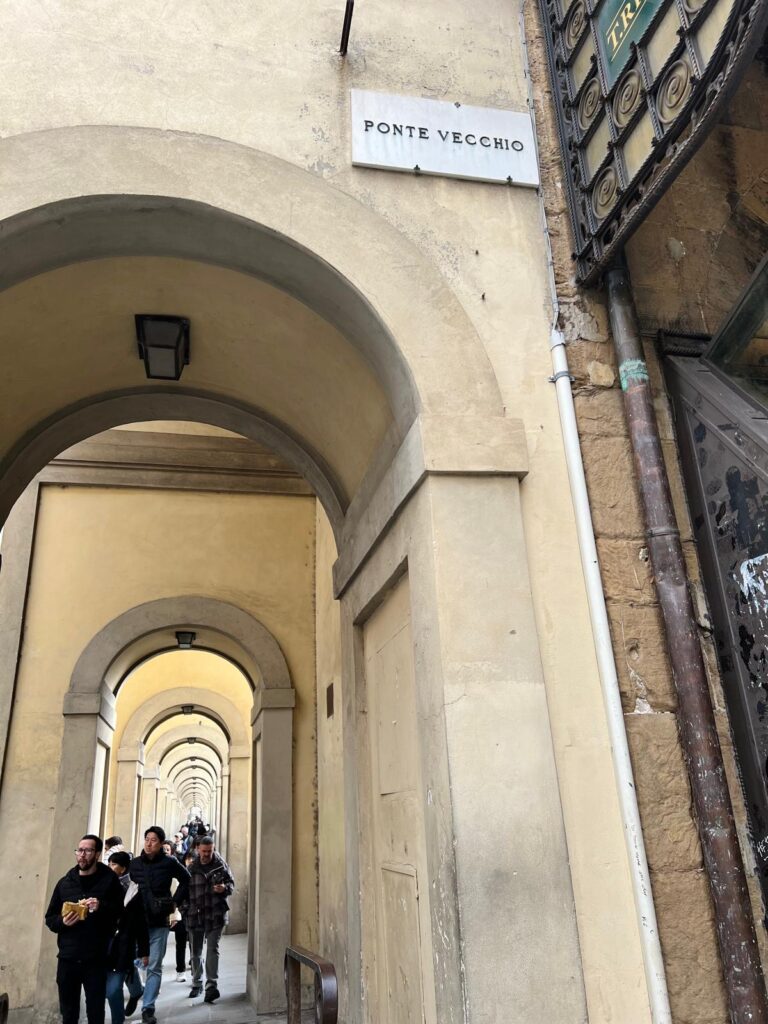
The Ponte Vecchio in Florence is built on the narrowest point on the River Arno. It has existed since the Roman times, even when the Via Cassia chose to cross the river at this point in 123 A.D. Giorgio Vassari is believed to have designed this famous bridge even though there is no assertive proof.
The Ponte Vecchio Jewelry Shops : Point Of Interest In Florence
For a considerable time in history, the authorities had banned butchers, fishermen and tanners from setting their business up on the bridge. This is because it was made up of wood and so commerce was discouraged, to protect it from damage. However, the council ventured to concretize the bridge in the 15th century. This venture incurred a high cost. Hence, it was planned to be partly recovered by letting out spaces on the bridge for commercial purposes. Being on the River Arno, the Ponte Vecchio offered the perfect spot for the business of butchery as the flowing water would keep its gory affair at bay.
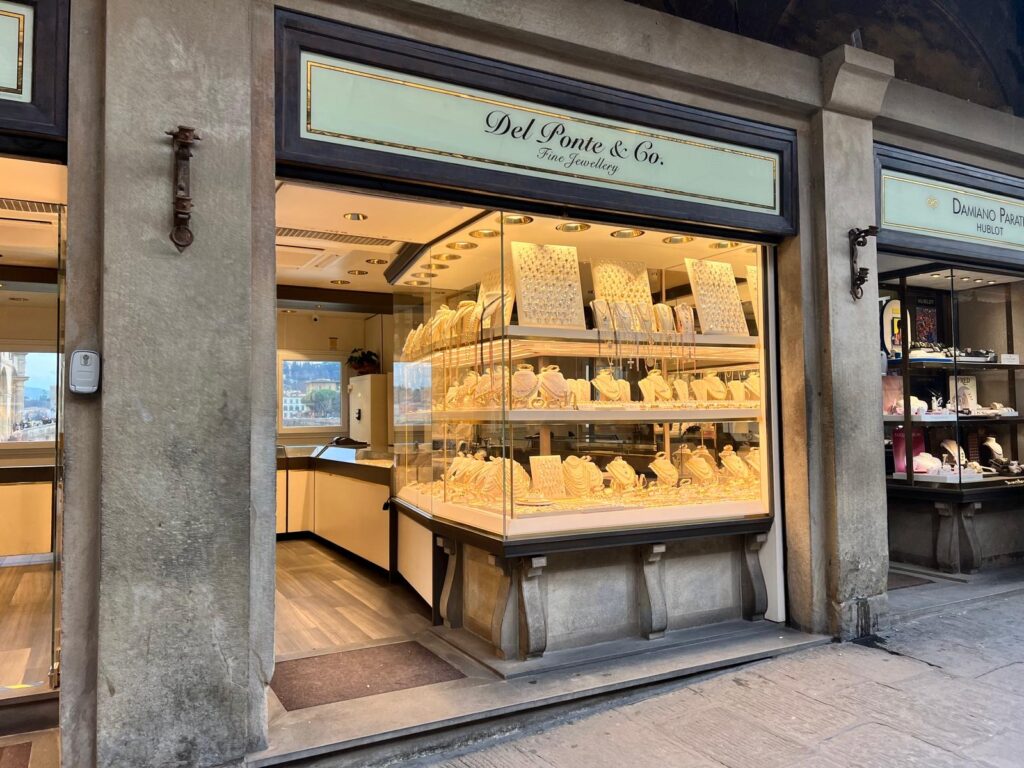
The Pontevecchio gold and jewelery shops adorn the bridge adding to its fame and attracting visitors from all over the world. It is often referred to as the Golden Bridge of Florence.
Tanners and parchment makers have always shared a symbiotic relationship with the butchers. This is because they successfully utilize the hides dispensed by the butchers. In other words, by 1590s, crossing the Ponte Vecchio amidst the meat and trades became a dubious affair for the Medici Grand Duke Ferdinand I. He expelled the butchers and tanners, redeeming Ponte Vecchio from reeking of flesh and blood like it used to. He also gave permission to the goldsmiths to set up shop on the bridge.

A magnificent bust of Benvenuto Cellini, a prominent Renaissance Goldsmith overlooks the Arno from a central position of the bridge. It bears testament to an ineffable bond that the goldsmiths share with the Pontevecchio bridge.
The Year 2006 saw a major ban on the padlocks of love on Pontevecchio. These locks were fastened on the railings near the bust of Cellini. They were causing considerable damage. Around 5500 of them were removed to reinforce the structure and aesthetics of the bridge.
Vasari Corridor : the Medici secret passage
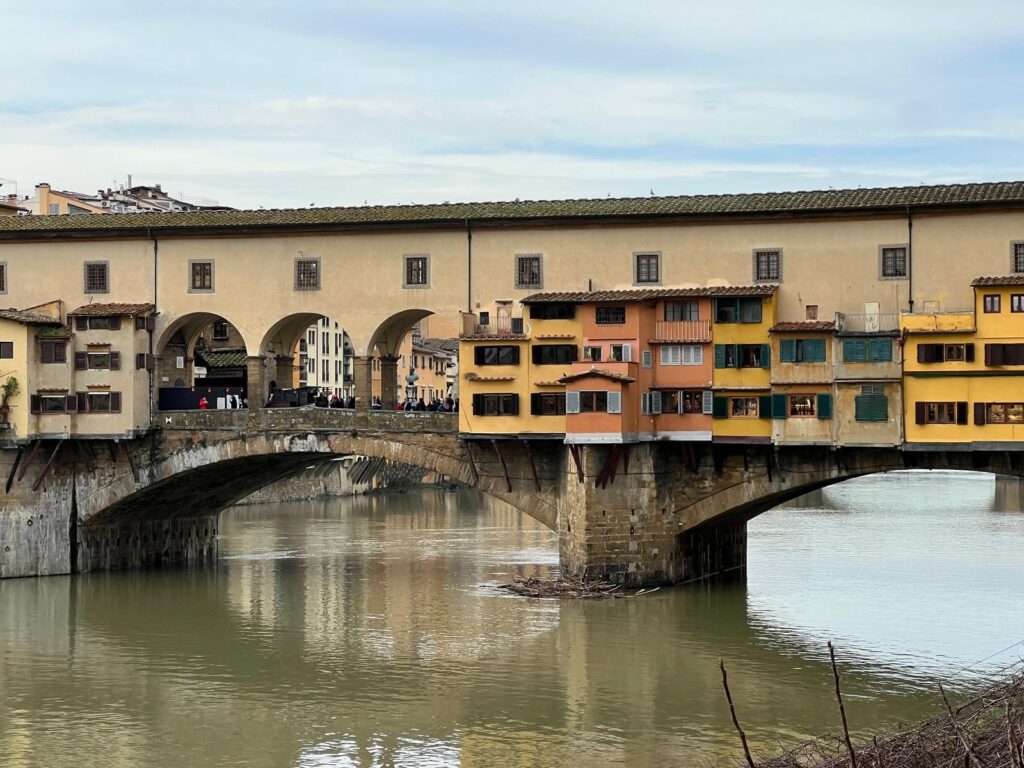
The Ponte Vecchio in Florence connects the residence of the Medici, the Palazzo Pitti, to the government offices in Uffizi and Palazzo Vecchio. The Medici Grand Duke Ferdinand I had to daily make his way through the busy meat shops on the bridge of Pontevecchio.
The unbearable stench of flesh during the commute, turned it into a harrowing experience. In 1565, the duke planned the wedding of his son, Francesco Medici with Joana of Austrian.
The Grand Duke appointed Giorgio Vasari, a famous Renaissance architect, to conceive an exclusive and covered Skywalk on top of the existing bridge. This would make the journeys of the Medicis to and from their residence to the Uffizi Square uninterrupted. Today this is known as the famous Vasari or Uffizi Corridor.
Today this spectacular corridor runs for about a kilometer. It opens up into the Boboli Gardens in the grounds of the Pitti Palace and houses several priceless pieces of art. Art enthusiasts often pay a visit with a prior appointment.
The Ponte Vecchio- the famous bridge that survived

The Ponte Vecchio claims an enchanting view of the River Arno. This view was instrumental in protecting it from the devastating effects of the Nazis in the Second World War.
The Ponte Vecchio in Florence, is the only bridge to get away from the wrath and the destruction of the retreating Nazis from Florence in 1944.
In 1938, before Hitler’s State visit to Florence, Benito Mussolini adviced to make the central Windows of the bridge wider. This would facilitate a better view of the River Arno by the Fuhrer. Hence, Hitler himself was instrumental in saving the Florence Pontevecchio from annihilation.
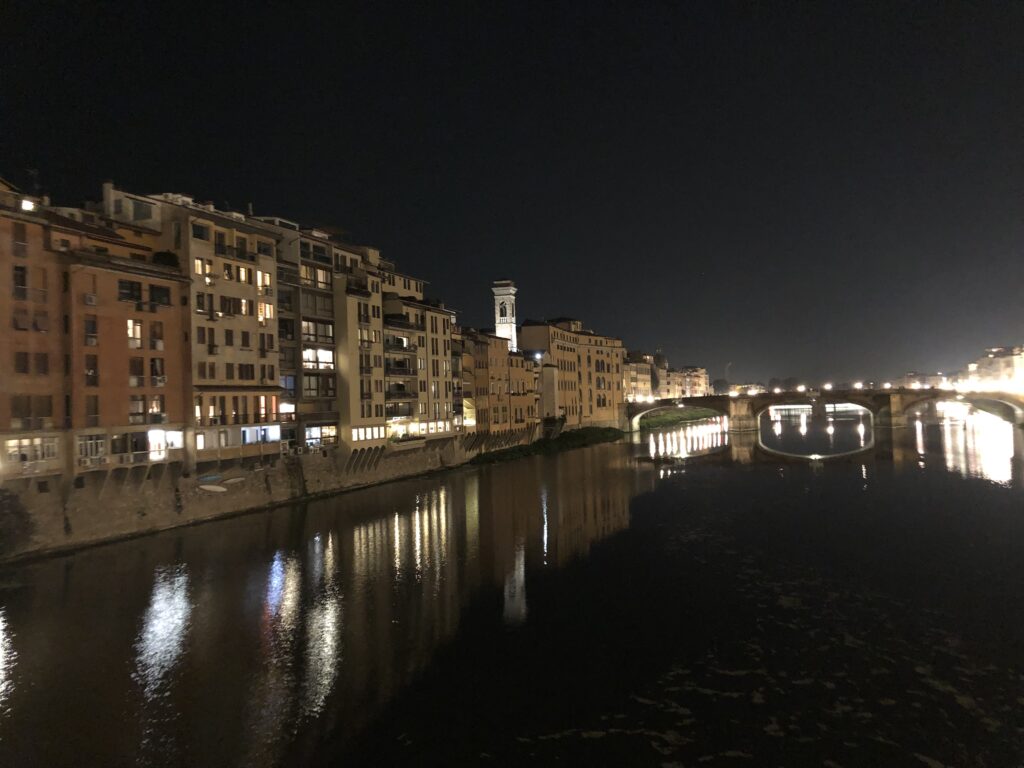
The prominent German diplomat Gerhard Wolf is also credited to save the Pontevecchio in the World War II. It is his love for this architectural wonder and his recommendation to save it from bombing to the Nazi High command, that were the reasons the Pontevecchio was a lone survivor during the World War II.
Flood and Its Damage
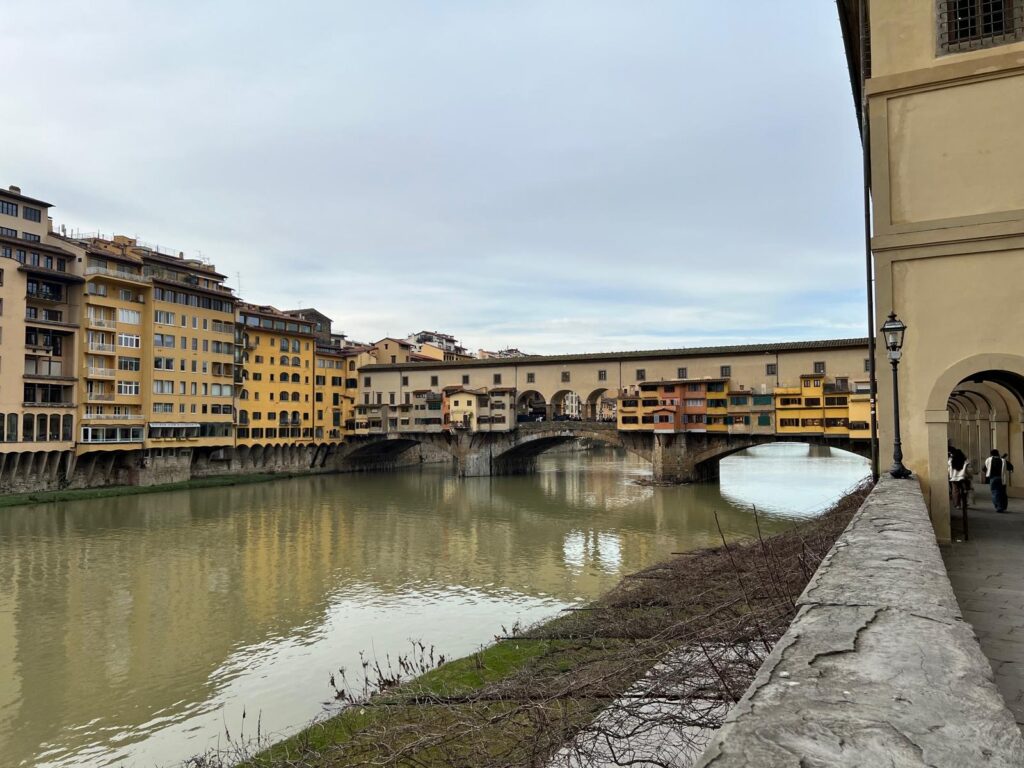
Multiple floods over centuries have caused detrimental damage to the bridge and yet it stays structurally strong. Floods damaged it many times. In 1333, it was rebuilt with stone. Unfortunately, that too didn’t last long. Apart from the two Stone piers, everything else succumbed to subsequent devastating floods. It was built again in 1345,
However, the worst flood that the Ponte Vecchio in Florence suffered was in 1966 when due to incessant rain, the water level of the Arno had reached 20 ft higher than usual. Florence had incurred a huge loss to life and property during this flood. What did the worst damage was a petrol tanker that had been washed away.
Yet the Ponte Vecchio still stands strong with a Herculean strength and grace and continues to awe and inspire tourists from all around the world.

Where To Find The Ponte Vecchio?
The Ponte Vecchio is just around the corner of the Uffizi Gallery and the Palazzo Vecchio. It is very near the Mercato Nouvo which houses the Wild Boar Of Florence.